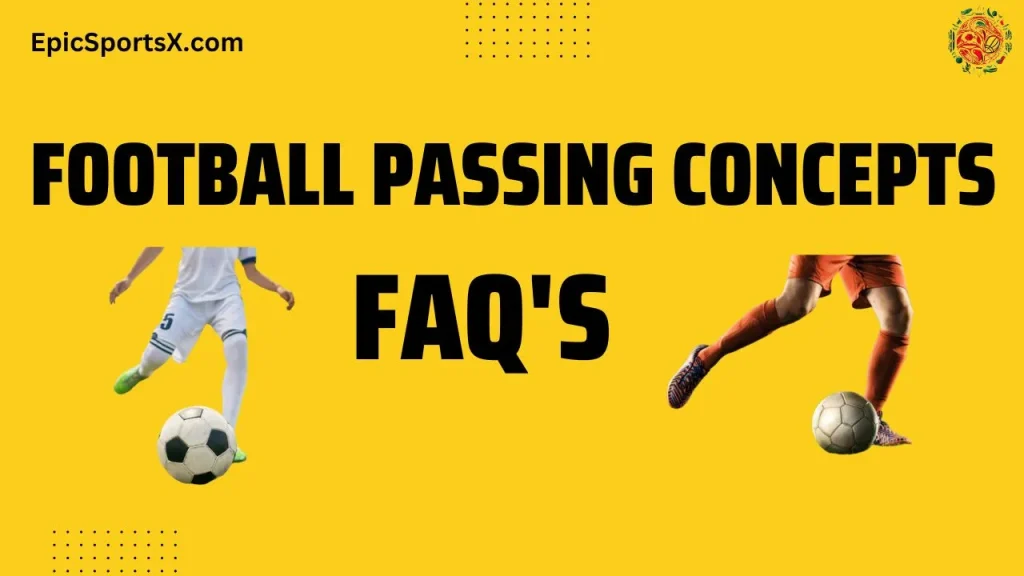If you’re a football enthusiast, you understand the crucial role passing plays in the game. Effective passing concepts are the backbone of a successful offensive strategy, allowing teams to move the ball down the field with precision and control. In this article, we’ll explore the intricacies of football passing concepts and how mastering them can lead to maximum impact on the gridiron.
1. Understanding the Fundamentals of Football Passing Concepts
Before delving into the various passing concepts, it’s essential to grasp the fundamentals of football passing. Passing involves the strategic movement of the ball from one player to another to gain territory and eventually score a touchdown. Players need to communicate effectively, anticipate each other’s movements, and execute precise throws.
2. The Key Components of Passing Concepts
Passing concepts are built on a foundation of specific elements that determine their effectiveness:
a. Route Tree
The route tree is a fundamental aspect of passing concepts, comprising various patterns and paths that receivers run during a play. Common routes include slants, curls, posts, and goes. Coaches often use these routes in combination to keep the defense off balance and create opportunities for big gains.
b. Timing and Rhythm
Timing is crucial in football passing. Quarterbacks must release the ball at the right moment, and receivers need to be at the designated spot on time. Establishing a rhythm between the quarterback and the receiving corps is essential for successful passing plays.
c. Reading the Defense
The ability to read the defense is a critical skill for quarterbacks. Identifying defensive formations, coverages, and potential blitzes helps the quarterback make informed decisions and find the open receiver.
3. Mastering Different Passing Concepts
a. West Coast Offense
The West Coast Offense is a popular passing concept known for short, quick passes that emphasize yards after the catch. It involves a series of high-percentage throws, which helps maintain possession and wear down the defense. Utilizing this concept effectively requires precise execution and strong communication between the quarterback and receivers.
b. Air Raid Offense
The Air Raid Offense is an aggressive passing concept that relies on spreading the field and stretching the defense vertically. It involves a high volume of pass attempts and often leads to explosive plays. This concept demands exceptional accuracy and arm strength from the quarterback, along with the ability to read the defense quickly.
c. Play-Action Passing
Play-action passing is a deceptive concept that involves faking a run play to draw defenders closer to the line of scrimmage before launching a deep pass downfield. This concept capitalizes on the defense’s focus on stopping the run, leaving receivers open for significant gains.
4. Implementing Football Passing Concepts in Practice
Mastering football passing concepts requires consistent practice, and it’s the key to success on the field. To truly excel, coaches play a crucial role in designing drills that focus on the specific elements of each passing concept. These drills enable players to refine their skills and gain a deep understanding of their roles within the offensive strategy.
In the pursuit of excellence, practice becomes the linchpin. By incorporating football passing concepts into drills, coaches ensure that players not only improve their passing abilities but also comprehend the significance of their roles in the game plan. As players engage in these purposeful exercises, they naturally become more adept at executing precise passes and making quick decisions during the game.
Conclusion
Football passing concepts are a fundamental aspect of any team’s offensive strategy. Understanding the nuances of passing, including route trees, timing, rhythm, and reading the defense, is essential for success on the field. Whether employing the West Coast Offense, Air Raid Offense, or play-action passing, precise execution and dedicated practice are paramount. By mastering these concepts, teams can achieve maximum impact on the gridiron, outmaneuver their opponents, and secure victory. So, let the pursuit of passing perfection begin!
Frequently Asked Questions (FAQs) – Football Passing Concepts

1. What are football passing concepts?
Football passing concepts refer to the strategic patterns and plays designed to move the ball through the air from one player to another on the offensive team. These concepts involve various routes, timing, and reading the defense to maximize the effectiveness of passing plays.
2. Why are passing concepts important in football?
Passing concepts are crucial in football because they provide teams with a versatile and effective way to advance the ball down the field. A well-executed passing game can keep the defense off balance, create scoring opportunities, and complement the team’s running game.
3. What are the 3 types of passing in football?
- Short Pass: A short pass is a quick and precise throw that covers a relatively short distance, typically within 10-15 yards. Short passes are commonly used in situations where the quarterback needs to get the ball to a receiver swiftly, such as in screen passes, slants, and quick out routes.
- Intermediate Pass: The intermediate pass covers a moderate distance, usually between 15-25 yards. It requires a bit more velocity and accuracy from the quarterback. Intermediate passes are commonly used to attack the middle of the field or to exploit the gaps in the defense.
- Deep Pass: The deep pass is a long throw that covers a considerable distance, often over 25 yards or more. Executing a deep pass requires a strong arm from the quarterback and excellent timing with the receiver. Deep passes are used to stretch the defense vertically, creating opportunities for big gains and touchdowns.
4. How important is timing and rhythm in passing concepts?
Timing and rhythm are paramount in passing concepts. Quarterbacks must release the ball at the right moment to ensure that the receiver is in the right position to make the catch. Establishing a good rhythm between the quarterback and receivers helps maintain the fluidity of the passing game.
5. What does “reading the defense” mean in passing concepts?
“Reading the defense” is the process where the quarterback analyzes the defensive alignment and coverage schemes before the snap. This skill allows the quarterback to make informed decisions, identify open receivers, and adjust the play accordingly.
6. Which passing concept is suitable for short, quick passes?
The West Coast Offense is well-known for its emphasis on short, quick passes that allow receivers to gain yards after the catch. This concept is designed to maintain possession, wear down the defense, and sustain long drives.
7. What is the Air Raid Offense, and how does it differ from other passing concepts?
The Air Raid Offense is an aggressive passing concept that involves spreading the field and frequently attempting deep passes. It aims to stretch the defense vertically and create explosive plays. This concept requires a strong-armed quarterback, quick decision-making, and a high volume of passing attempts.
8. How does play-action passing work?
Play-action passing is a deceptive concept that involves faking a run play to draw the defense closer to the line of scrimmage. This action creates an opportunity for the quarterback to make a deep pass downfield to open receivers, as the defense is momentarily caught off guard.
9. Can passing concepts be implemented at all levels of football?
Yes, passing concepts can be applied at all levels of football, from youth leagues to professional play. The complexity and variety of passing plays may differ, but the fundamental principles remain consistent.
10. How can teams practice and perfect football passing concepts?
Teams can practice passing concepts through regular drills and simulated game situations. Coaches should focus on individual skills, route-running, timing, and communication between the quarterback and receivers. Consistent practice and attention to detail are essential to perfecting football passing concepts.
11. What is the route tree in passing concepts?
The route tree is a collection of predefined patterns that receivers run during a passing play. It includes routes like slants, curls, posts, goes, and many others. The route tree enables receivers to create separation from defenders and offers quarterbacks multiple options during each play.

